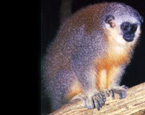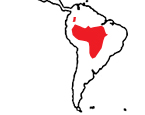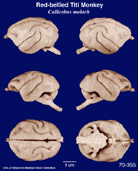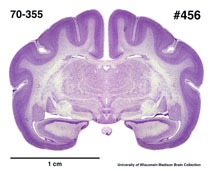|
Red-bellied
Titi Monkey
(Callicebus moloch) #70-355 |
||||
|
|
Physical
characteristics and distribution
|
|
Head
and body length is 240 - 610 mm, the tail is nonprehensile with
lengths from 260-550 mm. Weights of adults range from 955 -
1400 g. among the three species with females generally larger
than males. Coloration of the thick, soft fur ranges from reddish
gray or yellowish to reddish brown on the upper parts and paler
below. Callicebus have small rounded heads and flattened
face. Some have a black band on the forehead while others have
a white one. |
|
Description
of the brain
|
|
Animal
source and preparation
|
|
All
specimens collected followed the same preparation
and histological procedure.
|
Other Related Resources (websites and publications)
List of Specimens | Explore Collections | Brain Sections | Brain Evolution | Brain Development | Brain Circuitry | Brain Functions | Location and Use | Related Web Sites | Contact Us | Search MSU Database | Personnel | Home



